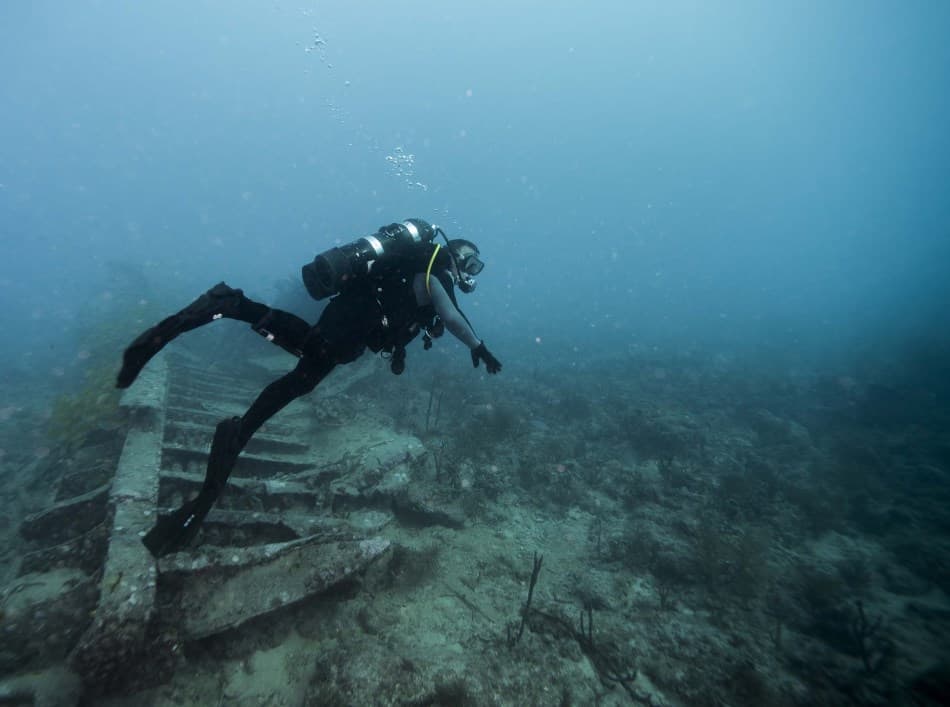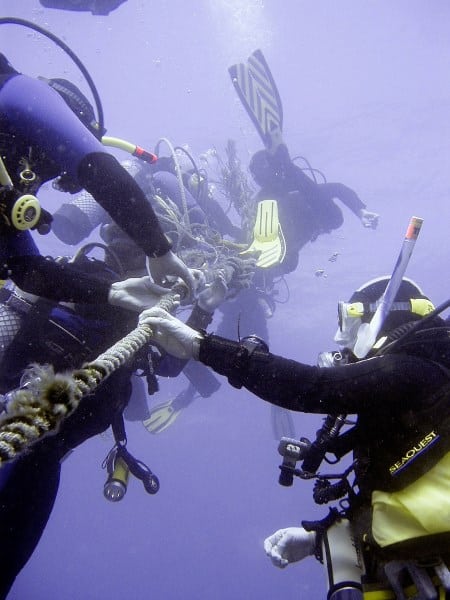Can You Scuba Dive With Tubes in Your Ears?
Scuba diving is a way for us to spend a few hours experiencing life underwater. But because we’re not sea creatures, we need to don special scuba diving gear and carry special equipment to survive underwater. Some of these items are absolutely essential for our survival under the surface, others might be there for some added safety.
Can you scuba dive with tubes in your ears? No, you cannot as long as those tubes are in your ears. They would allow water to get into your ears which most likely would lead to an ear infection.
You may have noticed that when you fly in an airplane, your ears pop after you land, and the entire time you’re in the air, there’s a blocked, buzzing feeling in your ears. This is because our ears are extremely sensitive to the environmental and pressure changes around us.
Similarly, being submerged in water opens you up to the risk of getting clogged ears, which may lead to infections like swimmer’s ear. If you end up contracting an infection, there are a few ways to deal with it.
One way, which is especially useful for children still in their growth stage is to insert tubes (or grommets) in the ear which prevent the ears from accumulating excess buildup. Once your ears are healed, they may either fall out on their own or you may need to get them extracted by your physician.
Why & How Are Tubes Placed in the Ear?
Sometimes ventilated ear plugs are referred to as ‘Tubes’. They allow air but not water to circulate through your ears.
These ear plugs for diving perform the following functions:
- Prevent “ear squeeze” caused by the intense water pressure.
- Help in preventing potential infections, both in the inner and outer ear.
- Protect against vertigo.
- Constant and proper use of tubes can help in preventing ear inflammation.
- Protect against surfer’s ear (or exostosis), which is a strange growth in the ear caused due to exposure to cold and wet environments.
Tubes that are implanted
These tubes function by allowing the middle part of your ear to drain until they reach a normal fluid level. Infection, inflammation or swelling often lead to fluid buildup in the ear. The tubes are inserted in the tympanic membrane (also known as the eardrum) to prevent excess fluid buildup in the middle of your ear.
These tubes are a temporary implants and may either fall out on their own or are extracted by a professional. The incision made to insert this tube in the ear is very minor and heals soon after the tube is removed. If a small divot remains, check it over time: it may take longer to heal or you may need to consult a physician for signs of infection.

Can You Dive With Tubes in Your Ear?
It is not advisable to dive with tubes in your ears as their ventilation holes allow water to get into the middle of the ear. This in turn can lead to infections.
Even once they’ve been removed, you can’t get back in the water immediately. A healing period of around 6 weeks or more is essential. Once this period is over, you need approval from your physician whether your ear is back to normal or not and if it’s safe to dive.
What Can Happen if You Dive With Tubes in Your Ears?
When you’re diving with tubes in your ears, you’re basically diving while you have an ear infection. The water pressure and the flow of water through the tube into your ear can worsen the infection, and in serious cases may also lead to deafness.
There is also a risk of the tubes getting jammed in your ear or getting damaged, which will impact your Eustachian tubes (the tubes which connect different areas within your ear). If you sustain any real damage to your Eustachian tubes, there is no going back. Your ears will be damaged for good.
The Dangers of Having Tubes in Your Ears
Having tubes in your ears is not a hundred percent safe. For someone who frequently experiences ear infections, their (Eustachian) tubes may become damaged.
This will make it harder or impossible for divers to equalize. The premature loss of a tube can present many problems such as exposing you to the risk of serious middle ear infections and barotraumas ear (discomfort in the ear).
You may start experiencing problems like buzzing and roaring in your ears. In the worst case scenarios, this may even lead to a partial loss in hearing, muffled hearing and fluid discharge from the ear canal.

Diving With Grommets
Grommets, also known as Tympanostomy tubes, are tiny ventilating tubes inserted in the ear as a treatment for ear infections. They are somewhat of a last resort for patients who can’t seem to stop the flow of fluid and blockage in their ears.
These tubes equalize pressure in your ears and prevent any buildup or blockage. They are generally a preferred treatment for children and they essentially allow your ears to function normally while your Eustachian tubes heal on their own.
Unlike regular tubes, these are a bit of a long term process of healing and may remain in your ears for 1-2 years based on how quickly your ears heal. It is relatively safe to dive with grommets after a certain time period.
After around 6 weeks of the grommets being inserted, you can consult with your doctor to find out if it is safe to dive. It is still however preferred that you wait out the entire period the grommets are in your ears before you get in the water again.
Prevention is Better than Cure
It is better to prevent ear infection in the first place to avoid the hassle and discomfort of dealing with tubes and grommets. You can take certain precautionary measures before and after each dive to avoid any pain later.
First off, make sure you “pop” your ears before you get in the water and after you get out. You can also use the following tips and tools to keep your ears protected in the water:
Keep Your Ears Clean
A basic remedy of alcohol and vinegar can do the job. The alcohol acts as an antiseptic and protects your ear from harmful bacteria, and the vinegar counteracts the drying effect of the alcohol.
A few drops of some mild, neutral oil of your preference can be used before and after your dive to clean out your ears and prevent any buildup.
If your ears have any waxy buildup, clean it out with a few drops of hydrogen peroxide or a commercial solvent. If this causes intense burning or itching, it might be a sign of an ear infection so make sure you consult your doctor.
An occasional wash with saline water can clean out your ears, but don’t use it too often or your ears will lose some of their equalizing properties.
Use Protective Gear
You can get a hood to slip on top of your head while you dive. This will prevent water from getting into your ears.
If you want to feel more protected, get a scuba mask that will also cover your ears. This can be a particularly useful tool if you experience frequent ear infections. If your hair is coming in the way, chances are some water might still get in your ear. Use the “pop” technique to get rid of the excess water.
If your ears are really sensitive, ventilated ear plugs might be a good idea. They are specially designed for underwater use and equalize the pressure in your ears without allowing any water to get in.
Warning: Do NOT use regular ear plugs as they can clog the ventilation to your ears and cause ear squeeze due to water pressure.
Post-Dive Measures
Don’t step into air-conditioned spaces immediately after you dive (and even before). If you feel like there’s a wind blowing, cover your ears.
When you’re in the shower, you can press a hot water bottle wrapped in a towel against your blocked ear to open it up.
Safety First!
In order to keep diving and enjoying your dives, it is necessary to take care of certain precautionary measures. If despite all your care, you still contract an ear infection, stay out of the water and make use of tubes or grommets (depending on your age and the severity of your problem) till your ears return to normal.

